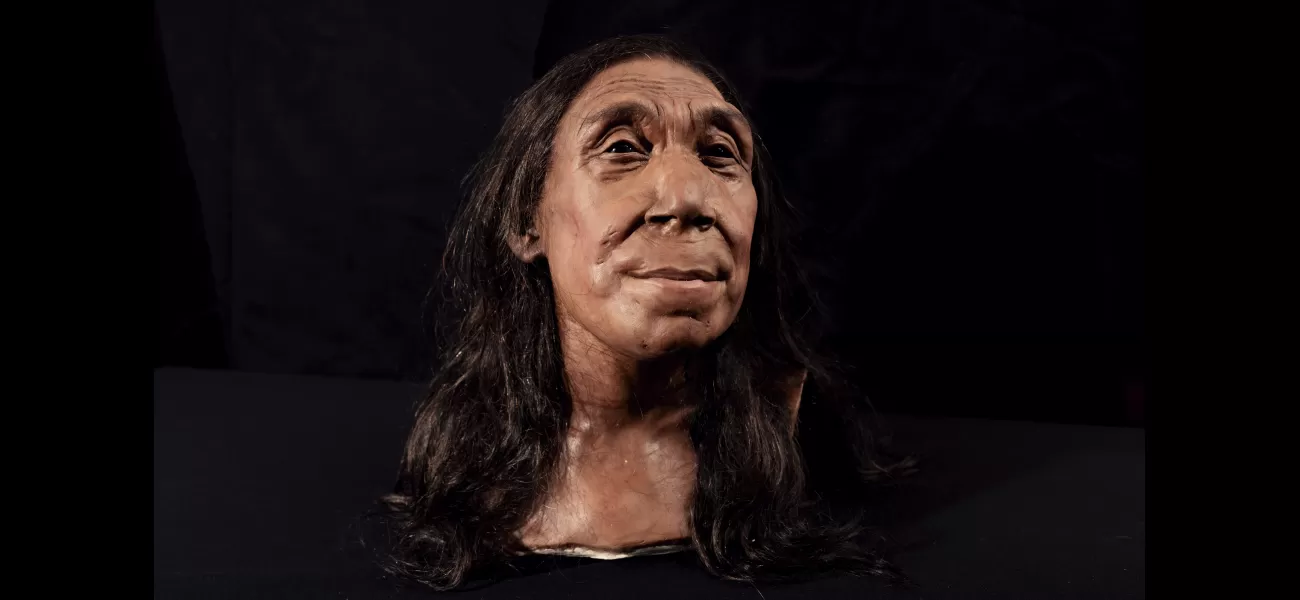Netflix documentary unveils the appearance of a Neanderthal woman from 75,000 years ago.
She appears youthful despite being 75,000 years old.
May 1st 2024.

In the new Netflix documentary, we are introduced to Shanidar Z, a 75,000-year-old female Neanderthal whose face has been recreated from fragments of her shattered skull. A team of archaeologists from the University of Cambridge and Liverpool John Moores worked tirelessly to piece together her face from hundreds of bone fragments, after it was flattened. Her discovery in Iraqi Kurdistan in 2018 was a significant find, as she was found in a cave where Neanderthals had repeatedly buried their dead.
The cave, known as Shanidar cave, was first made famous in the late 1950s when several Neanderthals were unearthed, suggesting that the species had a tradition of burying their dead. In this new documentary, titled "Secrets Of The Neanderthals," we follow the team as they return to Shanidar cave to continue their excavations. Dr. Emma Pomeroy, a palaeo-anthropologist from Cambridge's department of archaeology, explains that Neanderthal skulls look very different from human skulls, with prominent brow ridges, no chins, and a projecting midface. However, the recreated face of Shanidar Z suggests that these differences were not as stark in life.
Assembling the skull was no easy feat, with the lead conservator, Dr. Lucía López-Polín, having to piece together more than 200 fragments by hand. The process was delicate, as the bones were soft and fragile, similar to a biscuit dunked in tea. Dr. Pomeroy compares it to a high-stakes 3D jigsaw puzzle, with each fragment taking up to two weeks to process. The researchers believe that the skull may be connected to a lower half found in 1960, completing the skeleton.
Through the reconstruction of her skull, the team was able to determine that Shanidar Z was an older female with evidence of wear and tear on her teeth. She was also around five feet tall, with some of the smallest arm bones in the Neanderthal fossil record. The site analysis suggests that she was laid to rest in a gully that had been hollowed out to fit her body. The skull itself was flattened, potentially from rockfall shortly after her death. Her posture suggests that she was leaning against the side of the gully, with her left hand curled under her head and a rock behind her head, acting as a small cushion.
Professor Graeme Barker, who leads the excavations at Shanidar cave, sees the site as an ideal laboratory to answer one of the biggest questions of human evolution: why did Neanderthals disappear around the same time that our own species, Homo sapiens, began to spread? The documentary "Secrets Of The Neanderthals" will launch on Netflix worldwide at 8am on Thursday, May 2, providing a fascinating look into the world of Shanidar Z and the Neanderthals.
The cave, known as Shanidar cave, was first made famous in the late 1950s when several Neanderthals were unearthed, suggesting that the species had a tradition of burying their dead. In this new documentary, titled "Secrets Of The Neanderthals," we follow the team as they return to Shanidar cave to continue their excavations. Dr. Emma Pomeroy, a palaeo-anthropologist from Cambridge's department of archaeology, explains that Neanderthal skulls look very different from human skulls, with prominent brow ridges, no chins, and a projecting midface. However, the recreated face of Shanidar Z suggests that these differences were not as stark in life.
Assembling the skull was no easy feat, with the lead conservator, Dr. Lucía López-Polín, having to piece together more than 200 fragments by hand. The process was delicate, as the bones were soft and fragile, similar to a biscuit dunked in tea. Dr. Pomeroy compares it to a high-stakes 3D jigsaw puzzle, with each fragment taking up to two weeks to process. The researchers believe that the skull may be connected to a lower half found in 1960, completing the skeleton.
Through the reconstruction of her skull, the team was able to determine that Shanidar Z was an older female with evidence of wear and tear on her teeth. She was also around five feet tall, with some of the smallest arm bones in the Neanderthal fossil record. The site analysis suggests that she was laid to rest in a gully that had been hollowed out to fit her body. The skull itself was flattened, potentially from rockfall shortly after her death. Her posture suggests that she was leaning against the side of the gully, with her left hand curled under her head and a rock behind her head, acting as a small cushion.
Professor Graeme Barker, who leads the excavations at Shanidar cave, sees the site as an ideal laboratory to answer one of the biggest questions of human evolution: why did Neanderthals disappear around the same time that our own species, Homo sapiens, began to spread? The documentary "Secrets Of The Neanderthals" will launch on Netflix worldwide at 8am on Thursday, May 2, providing a fascinating look into the world of Shanidar Z and the Neanderthals.
[This article has been trending online recently and has been generated with AI. Your feed is customized.]
[Generative AI is experimental.]
0
0
Submit Comment





